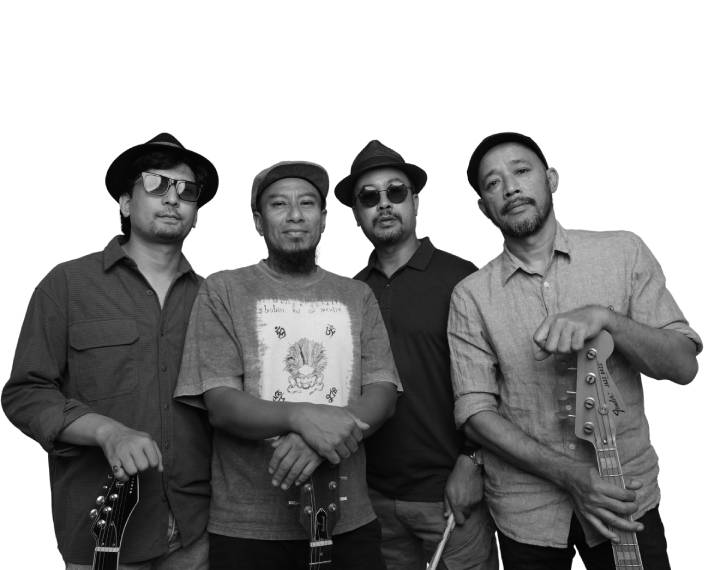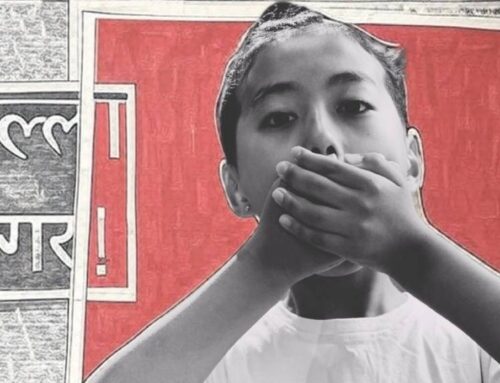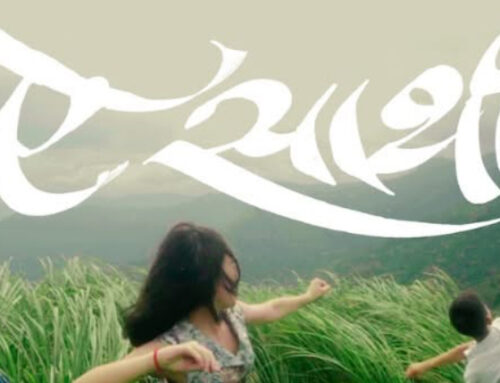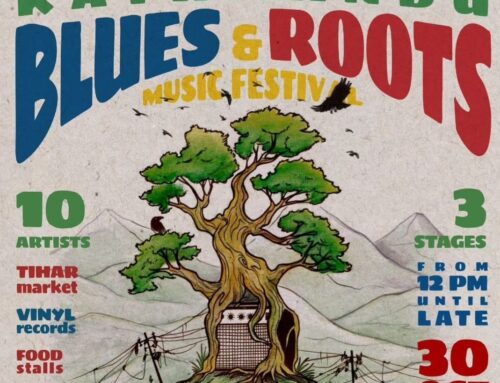Coming from the land of the Himalayas, The Himalayan Connection THC Inc. is more than a band, it’s a sonic bridge between roots and resonance. Formed in Kathmandu, Nepal, the group began as a trio and has since evolved into a four-piece ensemble, blending folk, rock, punk and reggae into a sound that’s both grounded and expansive.
Their debut vinyl release, THC Inc., is a labor of love, recorded live in a small underground studio in the autumn of 2015, just months after the devastating earthquake that shook Nepal. Amidst candlelight and chaos, the band captured ten songs in three days, battling long hours of load shedding and the unpredictability of power outages. The result is a raw, resilient, and deeply touching record.
At the heart of this journey is Bobin Bajracharya – vocalist, guitarist, and one of the founding members of the band. We chatted with Bobin about the origins of The Himalayan Connection, the magic of analog recording, the vinyl and the emotional weight behind THC Inc.
“Let’s get connected with the music! Be happy!”
🎧 Q&A with Bobin Bajracharya
How did The Himalayan Connection come together as a band? Who’s in the band?
Bobin: Saroj (drums) and I have been jamming together since our early teens. We’ve known Alok (bass) just as long—we’re all from the same town. Around 2005/6, we started jamming regularly on original songs, though I was still living in Japan at the time. In 2010, I moved back to Nepal permanently, and we started performing regularly as The Himalayan Connection.
We recorded this album as a trio, but later my cousin Sudan joined us on guitar. He added overdubs to the live recordings and became a formal member of the band.
What does the name “THC Inc.” mean to you, and how does it reflect your musical identity?
Bobin: THC stands for The Himalayan Connection. As the name suggests, we’re from the highest place on Earth—and we like to make people high with our music and get connected through it.
We all have different musical influences. For me, it’s Reggae (especially The Wailers), Bob Dylan, Grateful Dead, Narayan Gopal, old-school rock, blues, jazz, and world music.
How would you describe your sound to someone who’s never heard Nepalese folk rock before?
Bobin: I’ve never thought of our sound as Nepalese folk rock, maybe more like experimental psychedelic punk (laughs). I truly believe music has no shape, creed, or boundaries.
You could say we’re a folk rock band with influences of rock, reggae, blues, and funk from Nepal, rooted in Himalayan philosophy and universal sounds.
🎶 The Album Journey
This album was recorded in 2015, just months after the earthquake. What was it like creating music during such a turbulent time?
Bobin: We already had enough songs and wanted to record them live, which is simple yet complicated.
Since 2007, we’d been organizing a free event called Shanti Utsav, music and candles in the courtyard of Akcheswor Mahavihar, a 7th-century Buddhist monastery. After the earthquake in April 2015, we invited musician friends from Japan, including OKI (an Ainu musician) and sound engineer Naoyuki Uchida.
The border blockade by India made things even harder, load shedding, fuel shortages, skyrocketing taxi prices. I remember struggling to buy diesel for our generator just to keep the lights and music on.
After Shanti Utsav, we booked Satish Sthapit’s studio for three days and recorded live with Uchida. And here we are.
What made you choose analogue live recording over digital methods?
Bobin: Music is alive. I’ve always preferred live recording because it captures the moment. That’s why we chose analogue, what you hear is what we played. No make-ups.
Were there any moments during the recording process that felt especially emotional or transformative?
Bobin: The first track we recorded was Pulu Kisi. It was just one take, on the spot. That set a very positive tone and guided the whole session.
🔊 Collaborations & Craftsmanship
How did your collaboration with Naoyuki Uchida come about, and what was it like working with him?
Bobin: I’ve known Uchida for years from the music scene in Japan. He’s one of the most respected sound engineers in the global Reggae Dub scene.
I always wanted him to record our album, and I guess the earthquake led us to it. He’s amazing, both as a human and an engineer. He knows exactly what he wants to capture and always found ways to relax us and bring us back when things didn’t go as expected.
The “Uchida Sound” is a unique element of this album. How do you think it shaped the final product?
Bobin: His signature is raw, natural analog sound. Some might find it very raw if they’re used to digital, but this is his interpretation of our sound, and it’s justified.
All tracks were mixed manually on an analog mixer and mastered specifically for vinyl. This album introduces a completely new kind of sound to the Nepali music scene.
The vinyl cover is made from traditional Lokta paper. Why was it important to include this cultural detail?
Bobin: I’m all about supporting local products. I run a shop in Thamel called Melting Pot, which sells only Nepali-made goods.
Since we don’t have a record plant in Nepal, we had to press the LP abroad. But I wanted everything else to be made in Nepal, so we used handmade Lokta paper and silk screen printing for the cover. It’s important to support our traditional crafts and materials.
🎵 Musical Themes & Messages
Can you share the story or inspiration behind one or two tracks, perhaps “Malai Thaha Chaina” or “Pulu Kisi”?
Bobin: Malai Thaha Chaina means “I don’t know.” It’s about staying positive about the unknown future, and sharing our past with those close to us.
Pulu Kisi is the white elephant, the ride of Lord Indra. I wrote it when my son Aayan was a baby. I wanted to create something simple and cultural that even a child could sing. It’s a psychedelic reggae children’s song rooted in Kathmandu’s traditions.
Check out the music video on YouTube: Pulu Kisi
What themes or emotions do you hope listeners will take away from this album?
Bobin: It’s experimental. Each song has a different style, but our groove based approach ties it together. The lyrics reflect our roots and influences. I hope listeners find their own interpretations and connect in their own way.
🌍 Looking Ahead
What’s next for The Himalayan Connection?
Bobin: We have songs ready to record, but no fixed schedule yet. A few shows are coming soon, and we’re planning an LP release party in Kathmandu this December.
How do you hope international audiences will connect with your music?
Bobin: I truly believe music has no boundaries. I hope our sound from Nepal connects people around the world in a unique way.
How has your experience been working with Wild Yak Records?
Bobin: Wild Yak started something no one had done in a long time in Nepal, putting out Nepali music on vinyl. Big respect.
Though this is a self-produced and manufactured vinyl, we’re grateful to Wild Yak Records for supporting and helping us share our music.
⚡️ Rapid Fire with Bobin
- Vinyl, CD, Streaming or Cassette?
Vinyl for physical music collection, for sure. - Kathmandu Valley street food you can’t live without?
Not a big fan of street food, but who can deny good ol’ Mo:mo! - A Nepali artist or band you admire?
Narayan Gopal—forever the best. And Sunsan Raatma by Sunil Parajuli (1985) is a favorite. - One word to describe your band’s vibe?
Groovy!!!






